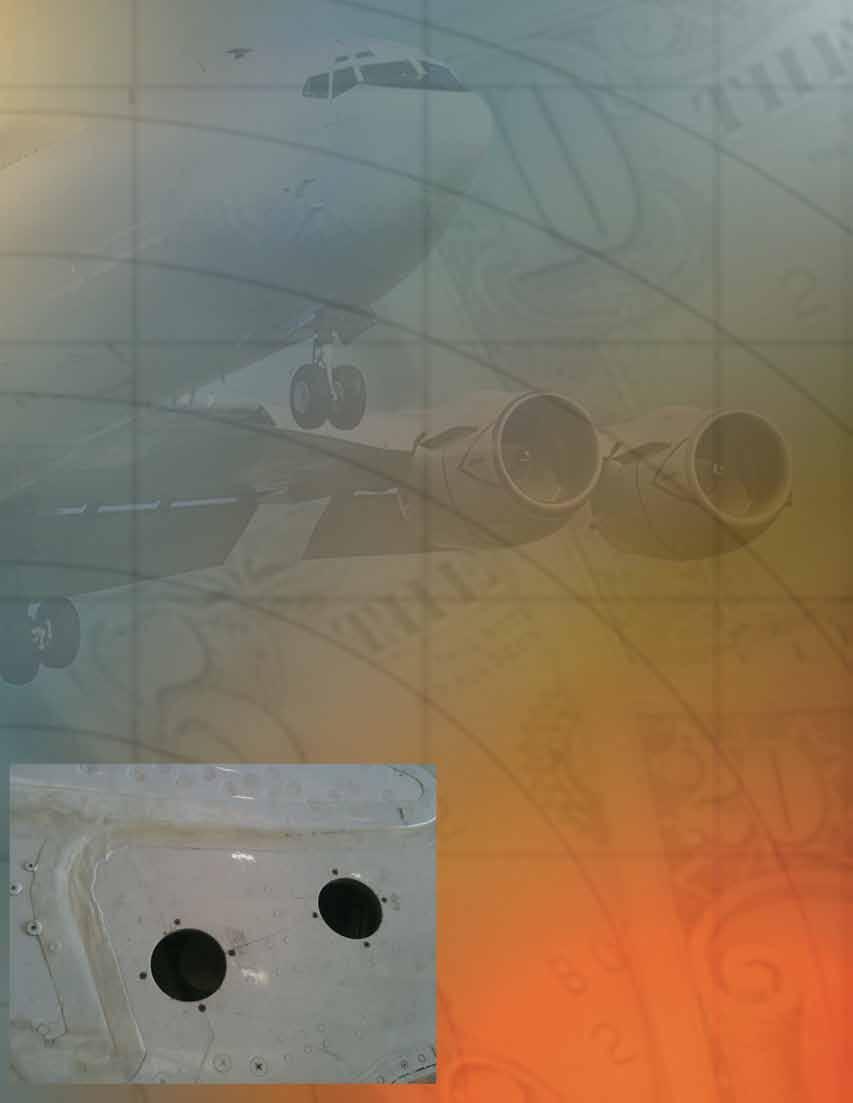
4 minute read
The Blame Game
By AM1 Russell Lons
It was a typical July morning at Tinker AFB, home of the mighty E-6B Mercury. I came in to work, grabbed the passdown log and started to receive the morning passdown from the mid-check supervisor. He told me that our detachment at Travis AFB, California, had found our aircraft, 408, with two panels off. The panels, which are checked during the 14-day inspection, were dangling by safety wire from the topside of the wing (during the 14-day inspection, these panels are safety-wired together to keep them from falling into the void in the wing).
Advertisement
I thought, “I can’t believe the det did a 14-day, left the panels off, and sent the bird flying. What type of maintenance are they doing out there?”
I went into maintenance control to get the latest and learned that the det hadn’t done a 14-day. The last 14-day was completed here at Tinker by my shop, seven days prior.
I began piecing together all the events of the last week. Our airframes shop here at Tinker had done a daily inspection of 408 on 6 July. The aircrew came in on 9 July and took custody of the jet, which included doing a thorough walk-around inspection prior to “buying” the jet. On 11 July, the aircrew did another pre-flight inspection before flying a 9.2-hour flight to Travis AFB. Once there, another daily was done, this time by det maintenance; that’s when they found the panels hanging on by said safety wire.
“There were way too many eyes and too many evolutions on that aircraft before this was discovered,”
I thought, “There’s no way this happened at Tinker. It must have been something one of the det guys did.” I reasoned that the det must have taken the wrong panels off for something else and forgot to put them back on, or, maybe they just got their tail numbers mixed up and pulled the panels off 408 thinking it was another jet.
My next course of action led me out to the hangar bay to show the maintenance master chief the panels in question; I also ran my theory of a det screw-up by him. He wasn’t so sure. I was determined to do more research.
I called the flight engineer who flew the aircraft to Travis and asked him what had happened out there. He said that initially he thought the same thing I did. He told me that he and the det QAR had retraced their steps looking for anything that might point to the panels being pulled off at the det. They sifted through all passdown logs and tool logs, and they talked to det personnel about anything that would have led to the those panels being removed. They came up empty. They believed that there was no possible way that any of the det personnel would have been on the wings of that aircraft. I realized that now the blame was probably on my guys and me.
I went back to review the evidence, focusing on discovering where the process could have taken a detour. I talked to the CDI whose name was on the completed 14-day MAF. According to him, he had looked at the panels before he signed the MAF, ensuring they were secure.
Aircraft 408 had a technical directive (TD) incorporated here at Tinker. It had required a lower set of panels be removed (not the usual, 14-day “upper” panels). I then asked the CDI if he’d looked at those upper panels when he signed the MAF. His answer: “No, the panels were not listed in the TD to be removed, so I didn’t check to see if those panels were off.” When I spoke with his worker, the mystery began to unravel.
When the panel work began during a previous shift, the worker (before starting the task) asked his CDI for verification. “Which ones I am supposed to remove?” he asked.
“The 14-day panels” said the CDI. So there it was—the worker was misled, the wrong panels had been removed.
Because of the mix-up, the right ones (the ones that were supposed to be removed per the TD) were checked by the next shift’s CDI. Of course, those panels were good because they hadn’t been touched. Meanwhile, there were two open panels on top of the wing that went unnoticed. As you may have guessed, some fault also lies with the CDI’s handling of the in-process TD MAF. Had the in-process MAF been more precise, the oncoming shift would have known which panels had been removed (and which ones hadn’t). Basically, the next shift’s CDI was operating in the blind and had no reason to inspect the 14-day panels. The work center pass down between shifts came up short, too.
Overall, this incident gave us all reason to pause and rethink how we were doing things at VQ-3. Fortunately for us, it was a cheap lesson in the importance of everyday maintenance actions.
Petty Officer Lons works in the airframes shop at VQ-3.
Analyst’s Note: The NAMP specifies the duration of daily and turnaround inspections, as well as the requirements to reissue them following any major maintenance. There is a specific sequence to follow, between maintenance (scheduled or otherwise), turnarounds and daily inspections, pre-flights, and actually flying the aircraft. As the author notes, there were multiple missed opportunities for someone to discover the loose panels prior to the flight to Travis AFB.











